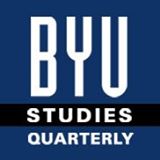BYU Studies

Keywords
BYU Studies, Chiasmus, Deuteronomy, primeval histoy
Abstract
There can be little doubt that ancient Near Eastern scribes, including those in ancient Israel, were well-trained in a wide range of technical devices associated with the composition, copying, transmission, editing, collation, revision, reworking, and interpretation of texts.1 My focus in the present study will be on one of the most interesting of these devices, the literary chiasm, in which textual content is ordered in an ABC::CʹBʹAʹ chiastic, or “x-shaped,” pattern. In many cases, once this pattern is recognized within a chapter or literary unit, an ostensibly haphazard or difficult to follow textual sequence gains a sense of order, as a logical structure emerges from the text. As such, recognition of the chiasm provides an intellectual and religious gain for the reader. Moreover, a study of chiasmus can provide a window into how scribes and editors worked with texts in antiquity.
Recommended Citation
Levinson, Bernard M.
(2020)
"At the Intersection of Scribal Training and Theological Profundity: Chiasm as an Editorial Technique in the Primeval History and Deuteronomy,"
BYU Studies: Vol. 59:
Iss.
5, Article 6.
Available at:
https://scholarsarchive.byu.edu/byusq/vol59/iss5/6
